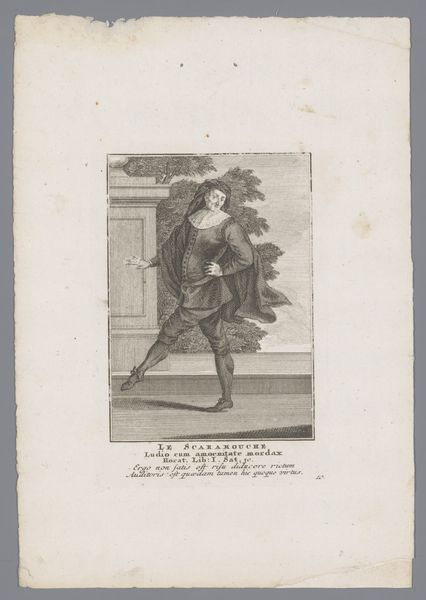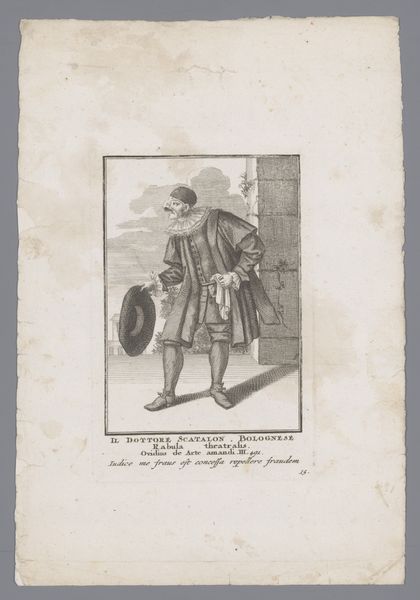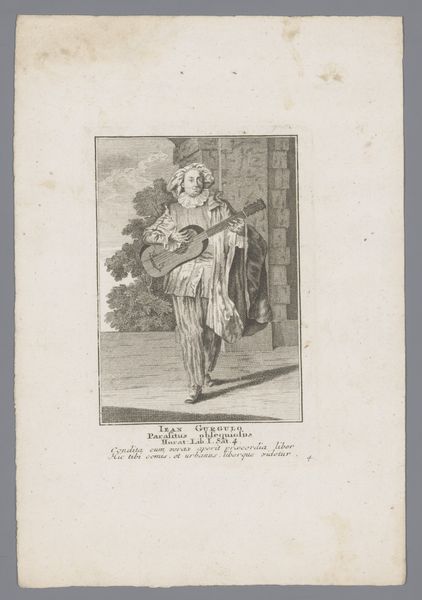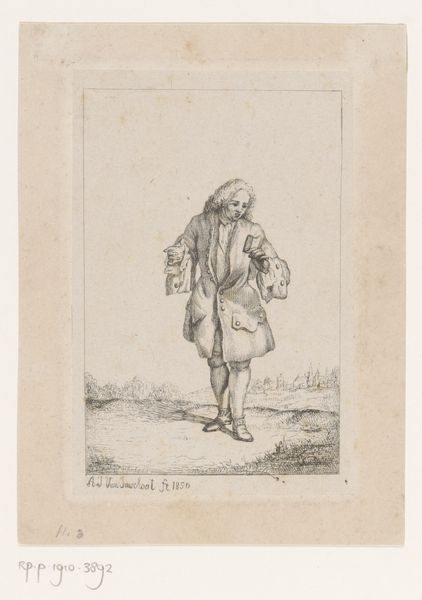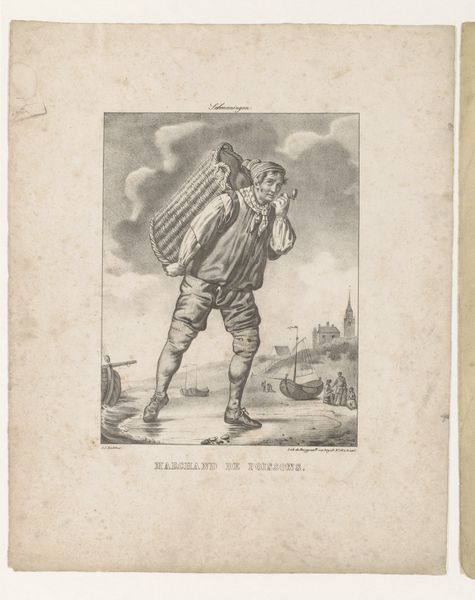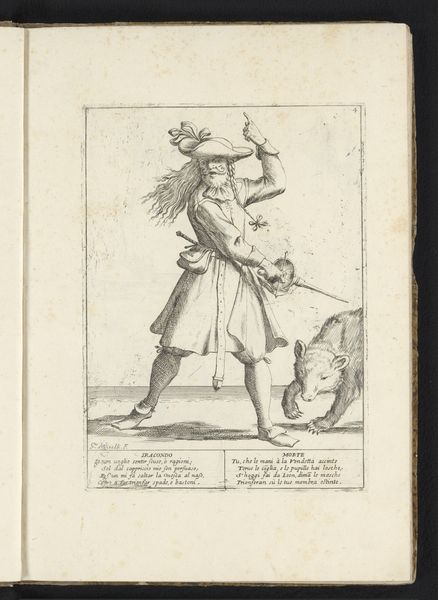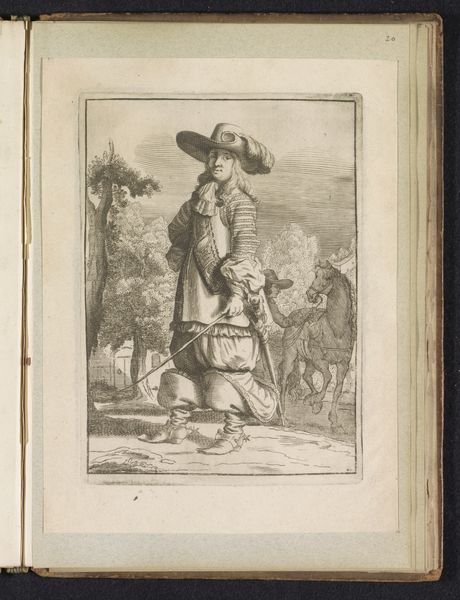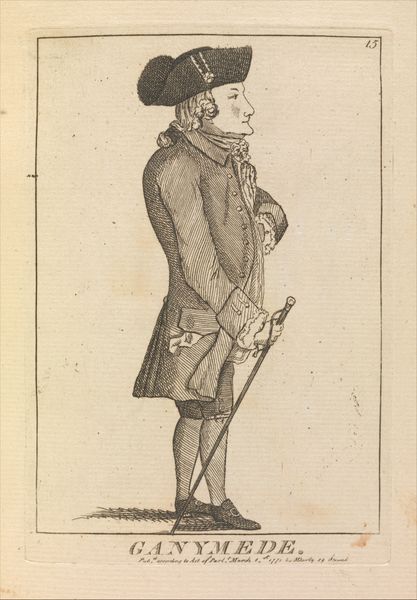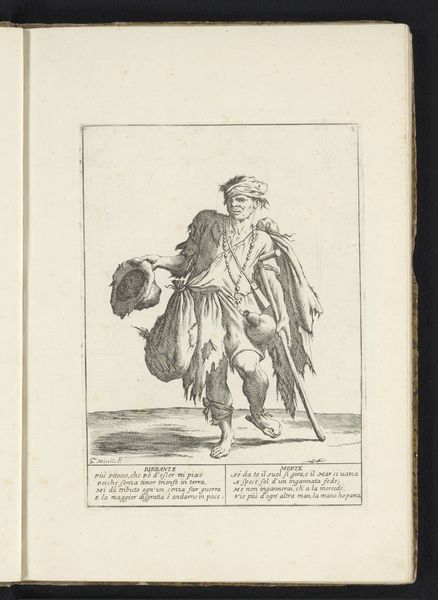
print, etching, engraving
#
portrait
#
baroque
# print
#
etching
#
figuration
#
genre-painting
#
engraving
Dimensions: height 171 mm, width 115 mm
Copyright: Rijks Museum: Open Domain
Editor: This print, "Signor Pantalon," dating back to sometime between 1694 and 1725, attributed to an anonymous artist and housed in the Rijksmuseum, really stands out due to its meticulous details achieved through etching and engraving. It makes me wonder about the process itself. What can you tell me about the production of this type of print and its historical significance? Curator: Focusing on production, it's crucial to consider the division of labor in printmaking. While attributed to an anonymous artist, several skilled artisans might have been involved, each specializing in engraving or etching, for instance. The creation of the plate itself involved meticulous labor, a copper plate being a valuable commodity. How do you think this materiality might have influenced the final artwork and its dissemination? Editor: It's interesting to consider that! Perhaps the value and effort made the artist more mindful of how many people could get their eyes on the work, even though it might not have their name. Curator: Exactly! Prints like these were integral to circulating images and ideas within the social strata. Engravings could reproduce paintings or create new images. They served as a means of documenting theater figures, such as Signor Pantalon here, a character that reflects specific social attitudes. So, consider this image's role in shaping, perpetuating, or even challenging contemporary perceptions of Venetian nobles. Editor: I hadn't thought about it that way! Seeing the work as a manufactured item meant to convey ideas adds a layer of interpretation beyond just seeing Signor Pantalon. Curator: Absolutely. By analyzing the materials and production, we begin to see art as an integral part of a wider cultural and economic framework, which helps to appreciate the social lives of things.
Comments
No comments
Be the first to comment and join the conversation on the ultimate creative platform.
